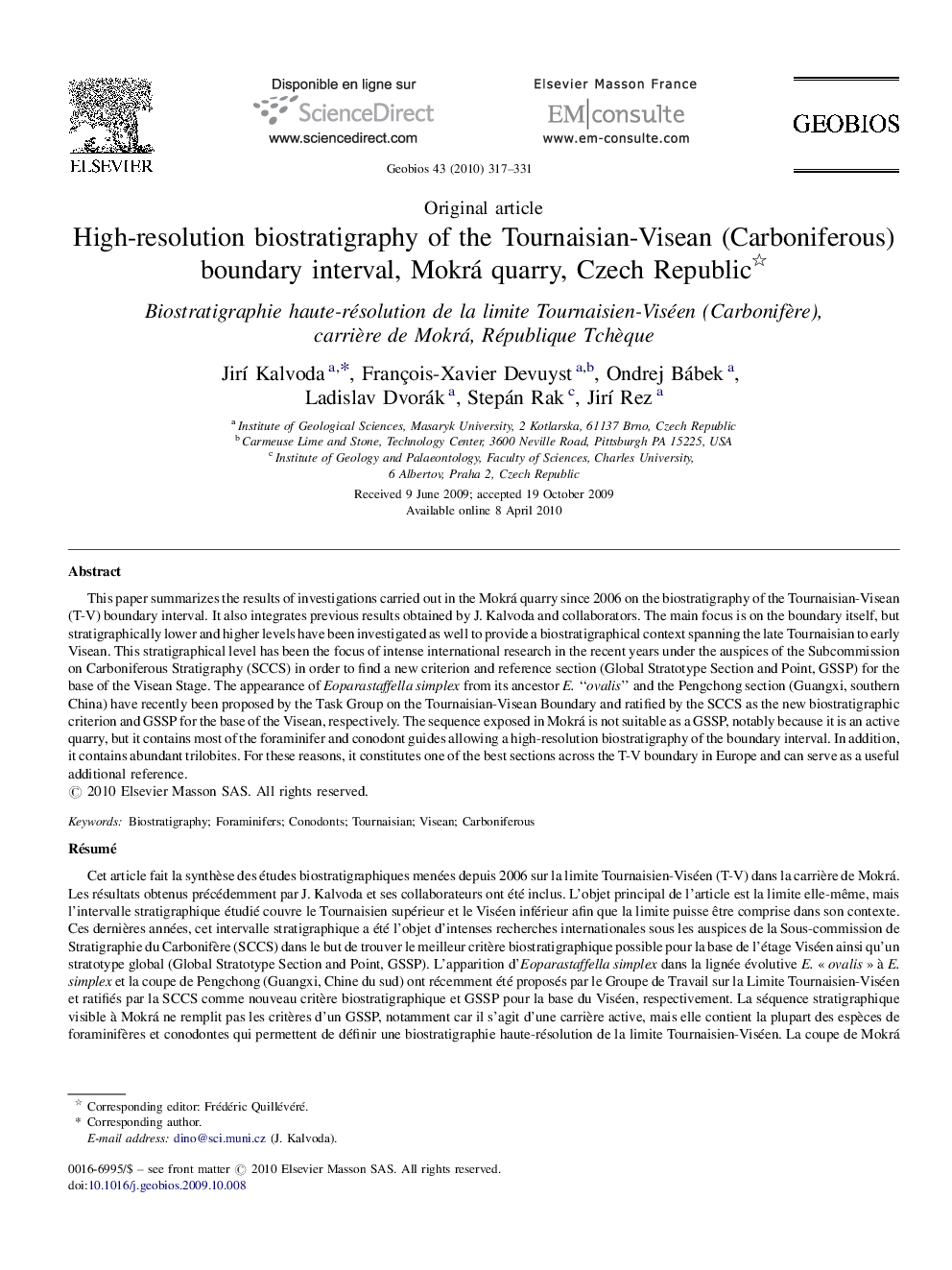| کد مقاله | کد نشریه | سال انتشار | مقاله انگلیسی | نسخه تمام متن |
|---|---|---|---|---|
| 4748353 | 1360100 | 2010 | 15 صفحه PDF | دانلود رایگان |

This paper summarizes the results of investigations carried out in the Mokrá quarry since 2006 on the biostratigraphy of the Tournaisian-Visean (T-V) boundary interval. It also integrates previous results obtained by J. Kalvoda and collaborators. The main focus is on the boundary itself, but stratigraphically lower and higher levels have been investigated as well to provide a biostratigraphical context spanning the late Tournaisian to early Visean. This stratigraphical level has been the focus of intense international research in the recent years under the auspices of the Subcommission on Carboniferous Stratigraphy (SCCS) in order to find a new criterion and reference section (Global Stratotype Section and Point, GSSP) for the base of the Visean Stage. The appearance of Eoparastaffella simplex from its ancestor E. “ovalis” and the Pengchong section (Guangxi, southern China) have recently been proposed by the Task Group on the Tournaisian-Visean Boundary and ratified by the SCCS as the new biostratigraphic criterion and GSSP for the base of the Visean, respectively. The sequence exposed in Mokrá is not suitable as a GSSP, notably because it is an active quarry, but it contains most of the foraminifer and conodont guides allowing a high-resolution biostratigraphy of the boundary interval. In addition, it contains abundant trilobites. For these reasons, it constitutes one of the best sections across the T-V boundary in Europe and can serve as a useful additional reference.
RésuméCet article fait la synthèse des études biostratigraphiques menées depuis 2006 sur la limite Tournaisien-Viséen (T-V) dans la carrière de Mokrá. Les résultats obtenus précédemment par J. Kalvoda et ses collaborateurs ont été inclus. L’objet principal de l’article est la limite elle-même, mais l’intervalle stratigraphique étudié couvre le Tournaisien supérieur et le Viséen inférieur afin que la limite puisse être comprise dans son contexte. Ces dernières années, cet intervalle stratigraphique a été l’objet d’intenses recherches internationales sous les auspices de la Sous-commission de Stratigraphie du Carbonifère (SCCS) dans le but de trouver le meilleur critère biostratigraphique possible pour la base de l’étage Viséen ainsi qu’un stratotype global (Global Stratotype Section and Point, GSSP). L’apparition d’Eoparastaffella simplex dans la lignée évolutive E. « ovalis » à E. simplex et la coupe de Pengchong (Guangxi, Chine du sud) ont récemment été proposés par le Groupe de Travail sur la Limite Tournaisien-Viséen et ratifiés par la SCCS comme nouveau critère biostratigraphique et GSSP pour la base du Viséen, respectivement. La séquence stratigraphique visible à Mokrá ne remplit pas les critères d’un GSSP, notamment car il s’agit d’une carrière active, mais elle contient la plupart des espèces de foraminifères et conodontes qui permettent de définir une biostratigraphie haute-résolution de la limite Tournaisien-Viséen. La coupe de Mokrá contient par ailleurs une riche faune de trilobites. Ces qualités en font une des meilleures coupes de la limite T-V en Europe et une coupe de référence complémentaire au stratotype.
Journal: Geobios - Volume 43, Issue 3, May–June 2010, Pages 317–331